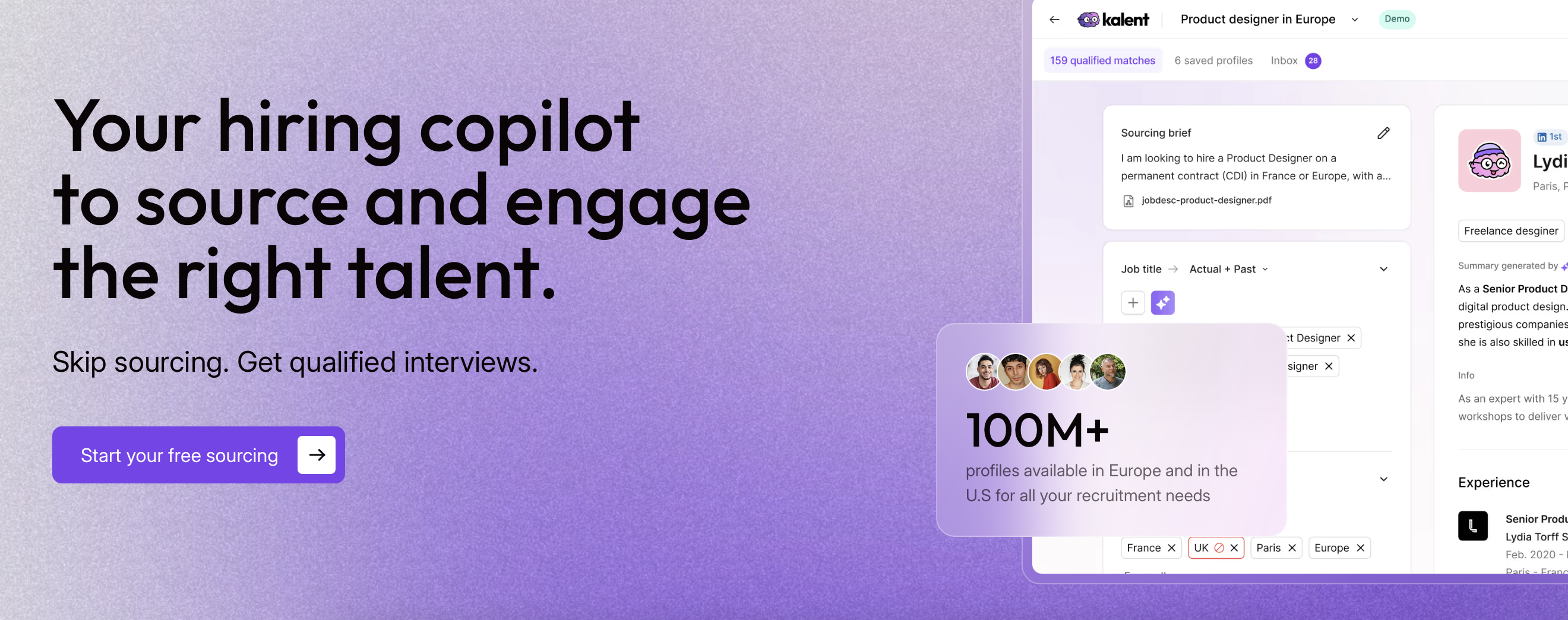How Can HR Teams Write Better Job Specifications with AI Tools in 2025?
In 2025, job specification HR strategies are being reshaped by AI-driven tools. This article explores how platforms like Kalent help HR teams write more targeted job specs, attract top candidates, and eliminate bias, turning every job specification HR document into a smarter recruitment asset.
Job Specification HR: How to Write Better Job Specs
Looking for job specification HR tips? Curious about how AI tools can help you master your recruitment comms in 2025?
In this article, we’ll explore the foundations of a good job spec and show you how automated tools and workflows can help you move beyond generic job specs and streamline the entire recruitment process, helping you close the top candidates.
HR & Recruitment: What’s Different in 2025?
A lot has changed in HR and recruitment over the past few years. From the introduction of AI to changing industry norms and hiring policies, it can be difficult to stay on top of all the latest developments.
If you want to attract high-value candidates, however, staying relevant is vital. You need to know how to make your job spec stand out in a sea of other, generic ads garnering attention online.
In 2025, simply posting a job ad and waiting for the applications to hit your inbox no longer works. This is because the candidates worth hiring aren't refreshing job boards daily – they’re most likely working somewhere else, and will only move for the right opportunity and offer.
Not only does this mean you need to meet them where they’re at, but you also need a compelling job specification to get their attention.
Despite the changing landscape, most companies are still using basic job specification templates from 2019 that never even worked to begin with. If your job specs are full of vague, corporate language, meaningless buzz words and zero personality, you won’t attract the top talent. Most likely, you’ll spend more time filtering out bad fits than actually talking to qualified candidates.
AI tools promise to fix this problem, but there's a huge difference between tools that help you write slightly better copy and platforms that can transform your entire recruitment workflow. Let’s explore what’s possible.
What Is a Job Specification in HR, and Why Is It Important?
A job specification in HR lists the skills, qualifications and experience a candidate needs to fulfill a role. Recruiters use job specs to find and filter candidates, usually sending the document after initial contact to gauge the person’s interest and suitability for the job. Candidates also use job specifications to decide whether to apply for a role or whether they’re even interested.
A decent job specification attracts people who can actually do the job and who are excited by the opportunity. An overly generic job spec that tells you next to nothing about the role or company will only invite applications from people who aren’t suitable.
This matters more in 2025 because the market moves faster, especially in highly competitive fields like tech and software development. Skills that were essential two years ago are less relevant today, while others are in high demand. The rise in remote working also means more candidates are competing for the same jobs.
All of this makes job specifications in HR more important than ever.

What Are the Signs of a Bad Job Spec?
The first step in knowing how to write a good job specification for HR is to know the mistakes to avoid. Here are the culprits of a bad job spec:
The Language Is Too Generic
Phrases like ‘team player’ and ‘self-starter’ appear in thousands of job ads, but they don’t tell candidates anything useful about the company or what they’re looking for. You should avoid corporate buzzwords and instead be specific and straightforward.
‘Somebody who can collaborate well with others on projects but also work under their own steam when necessary’ is more specific and will tell candidates what you actually mean. A good rule is that if your job specification could describe almost any role, it won't attract the specific people you need.
The Skills Listed Are Outdated
Another mistake recruiters make with job specifications in HR is that they reuse the same job specs from years ago. Even if you last hired for the job in 2023, the team is unlikely to still be using the same tools and processes.
It’s important to update the skills you require now. Fail to do this, and both your candidates and clients will assume you're out of touch, and you’ll end up hiring people who are no longer suitable.
Bias Goes Unnoticed
Even if you don’t mean to be biased, certain words in your job description could deter whole groups from applying. Vague ‘culture fit’ criteria often just mean ‘people like us’, which can be off-putting and will result in a less diverse workforce.
Nobody Replies
If nobody replies when you send out job descriptions, that’s a warning sign that your comms could be improved. Generic job specifications don't say anything interesting about the role you’re applying for and will deter candidates who have better offers elsewhere.
Which AI Tools Help HR Write Better Job Specifications?
As well as the job specification HR tips above, there are a few AI tools that can help you write better job specs and attract top candidates.
These include:
Textio

This AI tool focuses on eliminating biased language and making job ads more inclusive. It flags words that might put off certain groups and suggests alternatives to make sure you don’t deter anyone from applying.
Datapeople

Datapeople is a powerful AI tool that shows you how your job specification compares to market standards. It will tell you if your requirements are unrealistic or your language is too complex, helping you create something more specific and compelling.
ChatGPT or Claude

Simple generative AI tools like ChatGPT and Claude can also help you write job specs. Just make sure you’re super specific with your prompt and that you check for overly-generic phrasing and unintended bias. These tools can be great for improving your written comms, but your work still needs a human eye!
How Does Kalent Go Beyond Job Specification Writing in HR?
While the tools above will help you improve the clarity of your job specifications in HR, they don't connect your improved job spec to the right candidates.
Creating a better job spec is an important step in finding the right candidate for a role, but it’s not the whole journey. Kalent does something different. Rather than just helping you write a better document, it turns your job specification in HR into the foundation of your entire sourcing and outreach process.
All you need to do is input your job specification into Kalent, and our platform enriches it with context – not just keywords, but information on what the role actually involves and what kind of person would succeed.
Then Kalent uses that enriched specification to find candidates whose experience actually aligns with what you need.
Once we identify promising candidates, Kalent can build personalized outreach messages across LinkedIn, email, and WhatsApp/SMS, depending on hiring region (differnet communication laws and rules apply). Each message is tailored to fit the candidate's background and the specific role.
Most recruiters achieve around 10-20% reply rates with traditional outreach, while Kalent users typically see 30-60% and even higher. This fundamentally changes recruitment outcomes because you're actually having conversations instead of sending messages into the void.

Try Kalent Today!
Job specifications in HR are just one piece of the puzzle, albeit an important one. For HR teams who want both efficiency and a human-centered approach, Kalent offers a complete solution.
Ready to see how it works? Book a demo today to see what happens when your job specification becomes a recruiting engine instead of just another document.





